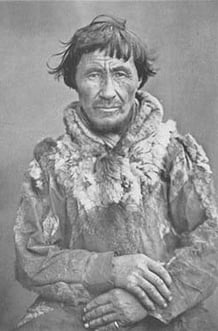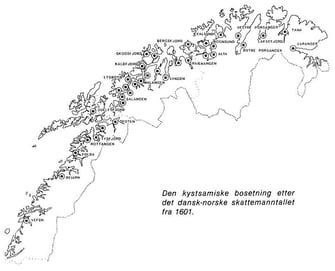If you’ve read anything about Sámi culture or literature recently, it may have been through Vendela Vida’s novel Let the Northern Lights Erase Your Name: A Novel (2007). While many works of indigenous literature have received international acclaim over the last century, Sámi fiction and poetry has remained relatively obscured from global readership. In case you’re not familiar with Sámi history or culture, we can give you a brief background. The Sámi are an indigenous group with geographic ties to the Arctic regions of Norway, Sweden, Finland, and Russia.
According to a presentation before UNESCO and the Nordic World Heritage Foundation, the Sámi are the only officially recognized indigenous group in the Nordic countries. While many do speak and write in Sámi language, many of these indigenous novelists and poets have published works written in Norwegian, Swedish, and other Nordic languages. There are relatively few Sámi writers whose works have been translated into English, but we’d love to encourage you to begin collecting their books.
Matti Aikio and the Early Twentieth-Century Foundations of Sámi Literature
 Matti Aikio (1872-1929) is one of the earliest modern writers of Sámi literature. Aikio was born in Norway in the late nineteenth century and lived only until the early part of the twentieth century. His novels are largely seen as caricatures of Sámi life, playing on tropes in other classics of world literature such as Don Quixote. Like other indigenous writers, Aikio wrote in a European language—Norwegian—to introduce his works to a wider readership.
Matti Aikio (1872-1929) is one of the earliest modern writers of Sámi literature. Aikio was born in Norway in the late nineteenth century and lived only until the early part of the twentieth century. His novels are largely seen as caricatures of Sámi life, playing on tropes in other classics of world literature such as Don Quixote. Like other indigenous writers, Aikio wrote in a European language—Norwegian—to introduce his works to a wider readership.
Many of his novels are set in the late nineteenth or early twentieth centuries, exploring the complex relationship between European Norwegians and Sámi people. It has taken quite awhile for most of his books to be translated into English, and there aren’t many presses that specialize in Sámi literature. The first edition of Aikio’s first novel, In Reindeer Hide [I Dyreskind Fortælling fra Finmarken], was published in Kristiania (now Oslo) in 1906 by W. Nygaard. First editions are extremely rare and difficult to come by. His last novel, The Village at the Riverbend [Bygden på Elvenesset], was published posthumously in 1929. If you’re looking for a true first edition, you’ll need to hunt down a copy of the book published in Oslo by W. Nygaard. In English translation, most of Aikio’s works have been published by Agarita Press out of Dripping Springs, Texas.
Ailo Gaup’s Contemporary Novels and Poetry
 Ailo Gaup (1944-2014) is perhaps the best-known contemporary Sámi writer. Like Aikio, he wrote in Norwegian. In addition to works of fiction and poetry, Gaup also was known for being a founding member of a Sámi theatre group in Oslo.
Ailo Gaup (1944-2014) is perhaps the best-known contemporary Sámi writer. Like Aikio, he wrote in Norwegian. In addition to works of fiction and poetry, Gaup also was known for being a founding member of a Sámi theatre group in Oslo.
During his career, he wrote two novels, both of which have been translated into English. His first novel, In Search of the Drum [Trommereisen], was first published in Norway in 1988. It was translated into English in 1993 and published by Muse Pubns. Both the Norwegian and English editions are rare, and you should plan to spend at least $100 to obtain an English-language copy of this work. In 1992, Gaup published another novel in Norway, The Night Between the Days [Natten mellom dagene]. Nearly two decades later, it was translated into English and published by the Nordic Studies Press in Chicago in 2010. The novel traces a couple’s return to the North in an effort to engage with and preserve indigenous cultural practices. Most of Gaup’s poetry collections appeared in Norway in the 1980s, and they’re difficult to find in translation.
If you’re interested in more Sámi literature, there are a handful of presses that have brought some of these works to English readers. Most notably, Davvi Girji o.s. published an English-language collection of contemporary prose and poetry in Oslo in 1996, In the Shadow of the Midnight Sun. The publication of the collection occurred through support from the Sámi Cultural Council. It contains work by Gaup, as well as by numerous other Sámi writers not previously translated into English. We recommend seeking out the collection as you develop and add to your indigenous literature collection.









